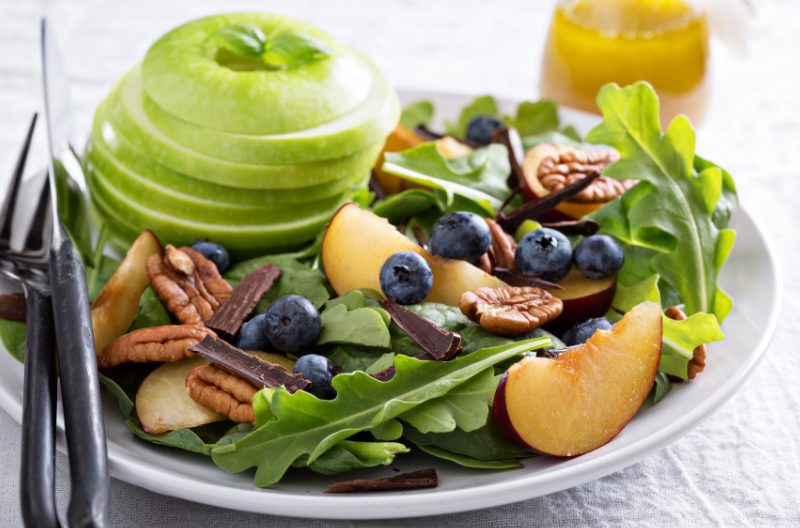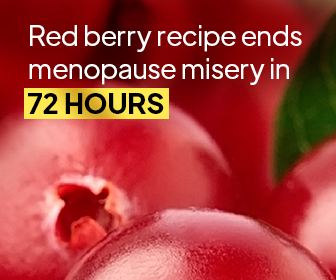Trendy diets come and go, but some dietary principles have stood the test of time. Many of these principles are present in the alkaline diet. Evidence shows that eating alkaline foods improves and maintains overall health and well-being. Furthermore, alkaline diet foods have been proven to cut the risk of chronic diseases and are used to support cancer treatments.[1] Alkaline foods are also commonly used as a foundation of anti-cancer diet plans.
So, what is an alkaline diet and what are alkaline diet foods? The alkaline diet is based on the idea that by reducing acid in your diet and consuming more alkaline foods, you can change the balance of your body’s processes. This may sound new, but it has been around for years. Scientists have been studying the effects of alkalinity and acidity on cancer cells. Perhaps you are unaware that many foods you eat are actually acid-forming. Several scientific studies have shown that acidic foods increase the risk of cancer.
By eating fewer acidic foods and more alkaline diet foods, the alkaline diet plan can actually help you decrease your risk of cancer. In fact, many alkaline diet foods are considered to be among the best cancer fighting foods.[2]
Keep reading to find out what the alkaline diet is and how it works as an anti-cancer diet. We’ll also look at how to create an alkaline diet plan that will help with cancer prevention.
What is an Alkaline Diet, Anyway?
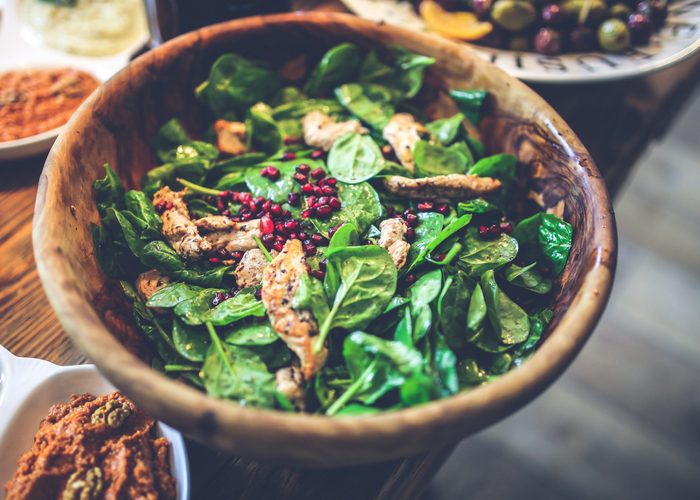
Unnecessary stress and inflammation can occur when your body processes acidic foods. Stress and inflammation have been linked to the development of cancer cells and they also hinder your ability to counter the threat of cancer.[3] So, not only does the wrong food contribute to the formation of cancer cells, but it also stops your body from fighting that threat. Therefore, a diet comprised of acidic foods creates a toxic space and debilitates your body’s ability to heal itself from that toxicity.
The alkaline diet focuses on reducing acidic foods (and increasing alkaline foods) in your daily diet. Alkaline environments have been shown to promote cancerous cell death. A study published by the British Journal of Radiology showed an increase in cancer cell death in bodies with higher pH levels.[4]
Alkaline diet foods have also been shown to aid in primary and secondary cancer prevention.[5] The Journal of the National Cancer Institute published a study showing evidence that eating more vegetables reduced the risk of premenopausal breast cancer in women.[6] Alkaline diet foods do not only help fight cancer, but they are also effective in cancer prevention.
Here are some of the main benefits of the alkaline diet:
- Minimizes stress and inflammation
- Reduces risk of cancer
- Helps fight cancer
- Helps reduce risk of chronic diseases such as high cholesterol[7]
- Lowers chronic back pain[8]
- Helps prevent diabetes[9]
- Reduce risk of cardiovascular diseases[10]
Understanding pH Levels of Alkaline Diet Foods
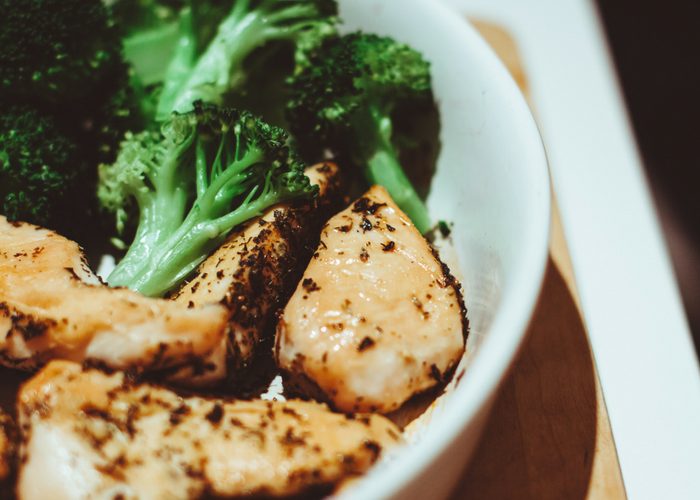
The first step to understanding alkaline diet foods is to figure out each food’s pH level. When we eat and burn food for energy, we actually create a byproduct, sort of like ash from a burning campfire. This “ash” is either acidic or alkaline. We measure the acidity/alkalinity of food on a pH scale based on this byproduct. pH levels range from 0 (most acidic) to 14 (most alkaline). A pH level of 7 is completely neutral.[11]
Different parts of your body have different pH levels. Blood pH levels are around 7.35 to 7.45. Conversely, stomach pH levels are quite acidic at 1.35 to 3.5. Eating alkaline diet foods will help to maintain your body’s optimal pH levels and promote healthy bodily function.
As the human diet has evolved over time, we are eating more acidic foods with fewer minerals and essential nutrients.[12] Even the soil where we grow our fruits and vegetables contains fewer minerals than before. This leads to fewer nutrients in the food we eat, even when we make healthy choices.[13] This is why it is so important to create a conscientious balance to your diet.
Generally speaking, most fruits and vegetables, along with many grains, grasses, nuts, and seeds are considered alkaline. On the other hand, most animal proteins, sugars, refined flours, and caffeinated beverages are considered acidic.[14]
Before we dive into the details of specific alkaline diet foods, let’s look at the main principles of the alkaline diet plan.
Principles of the Alkaline Diet Plan
The alkaline diet plan consists of plenty of nutrients and fiber, as well as “good” fats that are full of anti-inflammatory omega-3s.[15] It is low in animal proteins and processed foods. Overall, most of these basic principles help reduce the risk of diseases like cancer.[16]
A healthy alkaline diet plan is based on five simple steps. Listed below, they can guide you in adapting your diet and food choices towards a high alkaline diet and better health:
1. Look for fresh whole foods, and choose organic
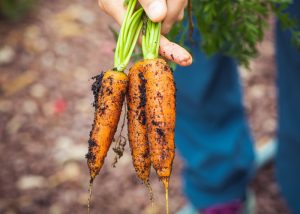
Eating a diet centered on whole foods and reducing your exposure to trans fats, processed sugar, and highly refined foods is the basis for any healthful lifestyle change. The alkaline diet is founded on this principle. In addition, vegetables should be prepared raw or lightly steamed. Cooking or frying vegetables is not ideal as it can result in a loss of nutrients.
2. Eat a variety of foods
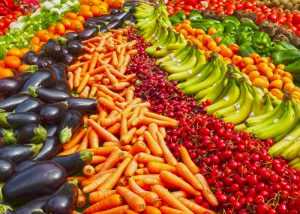
Eating a variety of foods, with a focus on alkaline diet foods, can help promote a healthy digestive system and clean functioning of your bodies’ processes. Shifting to alkaline diet foods that include more plant-based products and dietary fiber is proven to reduce your risk of cancer and other chronic diseases.[17] Start browsing fresh seasonal produce at your local farmer’s market – it can make meal planning and healthy eating a lot more fun!
3. Drink lots of water

Staying hydrated is an important part of any diet and the alkaline diet is no exception. Making sure to drink plenty of water – preferably filtered – will help your body process any changes to your diet and an increased intake of fiber. This will help your body expel and reduce toxic waste.
4. Avoid foods you are allergic to
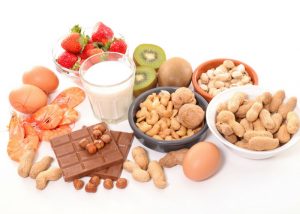
Eating foods you are allergic to can stimulate inflammation, regardless whether the food is generally alkaline or acidic. Pinpoint those food allergies and stay away from them.
5. Place emphasis on alkaline foods
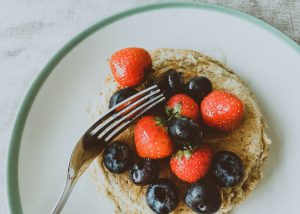
Based on your individual needs, you’ll want to eat a mix of both alkaline foods and acidic foods. However, the emphasis on alkaline foods will help make sure that your overall diet is contributing to lower inflammation levels, fewer food reactions, and optimal processing for the removal of toxins. Decreasing and limiting your consumption of acidic foods that have been associated with increased cancer risks is a great first step towards better health.
Fun Fact: Foods that we typically think of as acidic – like lemons or limes – are actually alkaline!
What Are Alkaline Foods?
Now that you know what an alkaline diet is and the principles of it, here’s a list of alkaline foods and acidic foods you can use to maintain a healthy and balanced alkaline diet. As a general rule, 70% of your diet should be made up of alkaline foods, and the remaining 30% from acidic foods.
List of alkaline foods
- Fruits, especially blueberries, pears, grapes, tropical fruit, and citrus
- Vegetables, especially dark leafy greens
- Raw spinach
- Lentils
- Spices
- Herbs
- Seeds
- Nuts
- Pumpkin seeds
- Seaweed
- Sweet potato
List of acidic foods
- Red meat
- Pork
- Poultry
- Fish
- Shellfish
- Eggs
- Pasta
- Table salt
- Yeast
- Sugar
- Alcohol
- Caffeine
- Processed flour
- Fried foods
- Unnatural or added flavors
What Are the Best Cancer Fighting Foods?
The American Institute for Cancer Research (AICR) highlights this list as the best cancer fighting foods:[18]
- Apples
- Blueberries
- Broccoli and cruciferous vegetables
- Carrots
- Cherries
- Dark green leafy vegetables
- Legumes (beans and peas)
- Flaxseed
- Garlic
- Grapefruit
- Grapes
- Spirulina
- Winter squash
- Whole grains
Based on what you already know about the principles of the alkaline diet, you may have realized that all these foods are considered alkaline, or very low acid-forming. The best cancer fighting foods form the foundation of your alkaline diet. This means that an alkaline diet plan automatically emphasizes cancer fighting foods, and helps you maintain your overall health.
Another alkaline food you may not have given much thought to is broccoli sprouts. Broccoli sprouts boast cancer-fighting properties, which makes it a highly recommended food to add to your diet!
How Alkaline Diet Foods Help Prevent or Fight Cancer
We are all aware that what we put into our bodies is important in maintaining optimal health and keeping diseases at bay. Studies have shown that the risk of serious illnesses, such as cancer, can be reduced with dietary and lifestyle habits. In a paper published by The American Institute for Cancer Research, approximately 30-40% of all cancers could be prevented by lifestyle and dietary measures.[19] Here are a few factors how alkaline diet foods help fight cancer or prevent it:
Fewer animal proteins
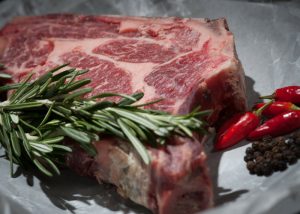
The alkaline diet plan is lower in animal proteins and does not include processed meats, which can include chemicals (nitrates and nitrites) that have been shown to promote the development of cancer cells, particularly colo-rectal cancer.[20]
Increased daily intake of fruits and vegetables
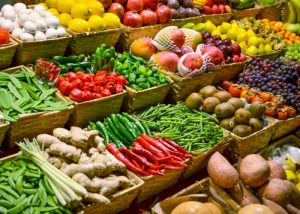
Almost every study on diet and well-being includes evidence that a diet rich in fruits and vegetables can protect against disease. Modern studies are consistently showing that fruits and vegetables are some of the best cancer fighting foods.[21] Alkaline diet foods consist largely of fruit and vegetable produce with minimal animal products, so you’ll be eating lots of cancer fighting foods.
Low refined carbohydrates and sugars

The alkaline diet helps to promote lower blood sugar and better glycemic control by minimizing refined carbohydrates and sugar. High sugar levels and obesity have been shown to increase the risk for cancer.[22]
High in antioxidants
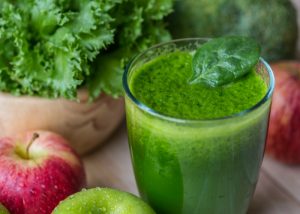
This diet includes abundant fresh vegetables and fruits high in antioxidants. These help the body counteract oxidation, inflammation, chemical absorption, and other stresses.[23] Additionally, adding fiber aids in the removal of toxins and waste products.[24]
Rich in essential fatty acids
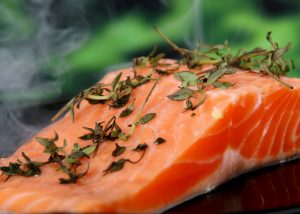
Omega-3 fatty acids are another important component of a cancer prevention diet.[25] An alkaline food plan suggests filling as much as 20% of your daily intake with omega-3 fatty acids. They play a vital role in protecting your body against inflammation and cancer.[26] Fish and seafood contain omega-3 fatty acids, as do walnuts, cashews, flax seeds and spirulina.
What Does An Alkaline Diet Plan Look Like?
A typical alkaline diet plan could look something like this:
- Breakfast: Scrambled eggs, unsweetened Greek yogurt, raw almonds, fresh berries
- Lunch: Baked chicken breast, sliced avocado, alfalfa sprouts
- Dinner: Butternut squash or mashed sweet potatoes, quinoa salad with dried berries and flax seed oil and lemon dressing
- Snacks: Baby carrots and celery, pumpkin seed hummus, or a spirulina smoothie
In general, the alkaline eating plan recommends that your diet meet the following guidelines, although individual needs may vary:

Complex carbohydrates
The alkaline diet will dramatically increase your fiber consumption. Alkaline diet foods such as vegetables, beans, lentils, and nuts contain complex carbohydrates. They make up the bulk of the daily fiber consumption for a healthy alkaline diet. This makes it even more important that you consume enough water to help eliminate waste from your body in a timely way.
400 grams or 5 portions of fruits and vegetables every day
Deciding to follow an alkaline diet plan means that you will include fruits and vegetables at every meal. This will help ensure an adequate daily intake of dietary fiber, as well as add color and flavor to each meal. Be sure to eat fruits and vegetables that are in season!
10-20% intake of essential fatty acids
An alkaline diet is vitally rich in essential fatty acids. These can come from omega-3 supplements or from organic oils such as walnut, canola, or cold-pressed olive oil. You can also find essential fatty acids in whole foods such as fresh nuts and seeds. Unlike the unhealthy trans fats found in processed foods, these healthy fats have actually been proven to lower inflammation. They even reduce the risk for cancer.[27]
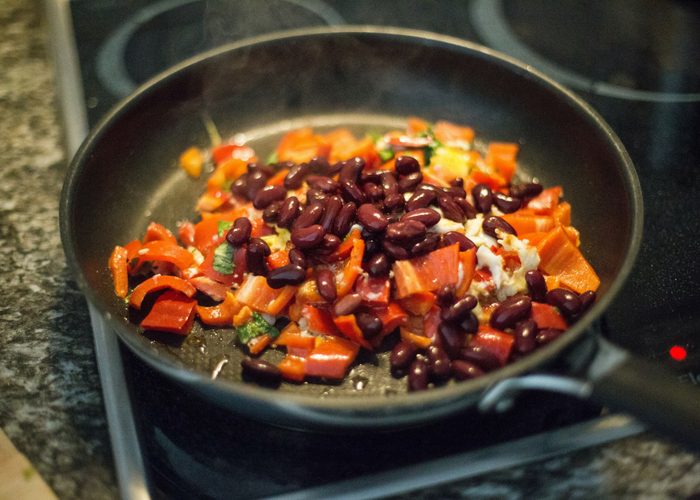
50-60 grams of daily protein
You will be eating more vegetables on an alkaline diet, so it is important to ensure you are getting the daily recommended amount of protein from what you eat. By choosing protein-filled alkaline and low acid-forming foods, you’ll be able to get your daily source of protein. Salmon, mackerel, and sardines are low acid-forming foods that are great sources of protein. Plant-based options such as whole grains, beans, and legumes can also help fill your daily protein intake whilst boosting the alkalinity in your diet.
Lots of water throughout the day
Ideally, water should be sourced from natural springs or rivers, but not all of us have a creek nearby to get fresh water. Filtered tap water is usually fine as it has a neutral pH level. However, distilled or purified water is considered to be acidic and is best avoided. Water should be the most-consumed beverage throughout your day. You can try adding some sliced blueberries or grapes to your water to boost its alkalinity, and for a bit of extra flavor.
How To Start Your Alkaline Diet Today
Ready to start living healthier with an alkaline diet plan? Here are some actionable tips to get you started:
- Start cutting out processed foods and replacing them with whole, fresh, organic foods. Try replacing potato chips with toasted almonds or raw pumpkin seeds. You can also swap out ice cream for frozen yogurt or freshly blended smoothies.
- Replace soda and caffeinated drinks with water. Adding freshly sliced lemons, strawberries or cucumber to water adds a touch of fresh flavor that can make the transition to a healthier lifestyle a little easier to embrace. You can also try replacing your favorite drinks with a glass of almond milk, coconut water, or lemonade.
- Try vegetarian meat-alternatives you find in the supermarket. There are many healthy alternatives to hamburgers, hot dogs, and sausages that are plant-based. Next time you’re craving a burger, opt for a lentil, chickpea or quinoa patty instead of your regular meaty middle.
- Explore alkaline diet foods with delicious palate-friendly international cuisines. Mediterranean or Asian foods use many components of the alkaline diet and can be a great way to include more alkaline diet foods in your routine. Indian curry, Thai stir-fry, or a Mediterranean-style seared seafood platter can all be wonderful additions to your diet and ease the transition towards an alkaline diet.
- Increase the alkalinity of your water by adding lemon, lime, blueberries or other alkaline fruits. These will also help add a boost of flavor to your drink!

Conclusion
In summary, the alkaline diet requires a small investment of time and energy to change your way of thinking about both the specific foods you eat and the overall composition of your diet. You’ll need to learn whether foods are alkaline or acidic and adjust your palate to the new foods that you try. Just remember to take all these factors into account as you choose your alkaline diet foods and begin to plan your alkaline recipes and lifestyle plan.
Best of all, getting started with an alkaline eating plan requires no special equipment or burdensome food planning. Simply by shifting your diet to more whole foods with an alkaline base to create good internal balance, you can begin reducing your risk for cancer and other chronic diseases today. And remember, when you try new things, even if you don’t like them, there is always more to explore so just have fun and be healthy!
References
- [1] NCBI. https://www.ncbi.nlm.nih.gov/pubmed/24870117
- [2] https://www.hindawi.com/journals/jeph/2012/727630/
- [3] https://www.hindawi.com/journals/jeph/2012/727630/
- [4] NCBI. https://www.ncbi.nlm.nih.gov/pubmed/1954534/
- [5] https://juniperpublishers.com/jcmah/pdf/JCMAH.MS.ID.555580.pdf
- [6] https://academic.oup.com/jnci/article/88/6/340/1004913
- [7] Gerry K. Schwalfenberg. https://www.hindawi.com/journals/jeph/2012/727630/
- [8] https://www.ncbi.nlm.nih.gov/pubmed/11787986/
- [9] https://www.ncbi.nlm.nih.gov/pubmed/24232975
- [10] NCBI. https://www.ncbi.nlm.nih.gov/pubmed/21481501
- [11] https://www.ncbi.nlm.nih.gov/pmc/articles/PMC3195546/
- [12] https://www.ncbi.nlm.nih.gov/pubmed/24870117
- [13] NCBI. https://www.ncbi.nlm.nih.gov/pubmed/24870117
- [14] https://www.hindawi.com/journals/jeph/2012/727630/
- [15] https://www.ncbi.nlm.nih.gov/pubmed/12442909
- [16] NCBI. https://www.ncbi.nlm.nih.gov/pubmed/24870117
- [17] https://www.ncbi.nlm.nih.gov/pmc/articles/PMC3195546/
- [18] NCBI. https://www.ncbi.nlm.nih.gov/pubmed/22237782
- [19] https://ci.nii.ac.jp/naid/10025854176/#cit
- [20] https://www.ncbi.nlm.nih.gov/pubmed/24870117
- [21] NCBI. https://www.ncbi.nlm.nih.gov/pubmed/24870117
- [22] https://www.ncbi.nlm.nih.gov/pubmed/24870117
- [23] https://www.ncbi.nlm.nih.gov/pubmed/24870117
- [24] Gerry K. Schwalfenberg. https://www.hindawi.com/journals/jeph/2012/727630/
- [25] NCBI. https://www.ncbi.nlm.nih.gov/pubmed/25337547
- [26] https://www.hindawi.com/journals/jeph/2012/727630/
- [27] https://www.hindawi.com/journals/jeph/2012/727630/

